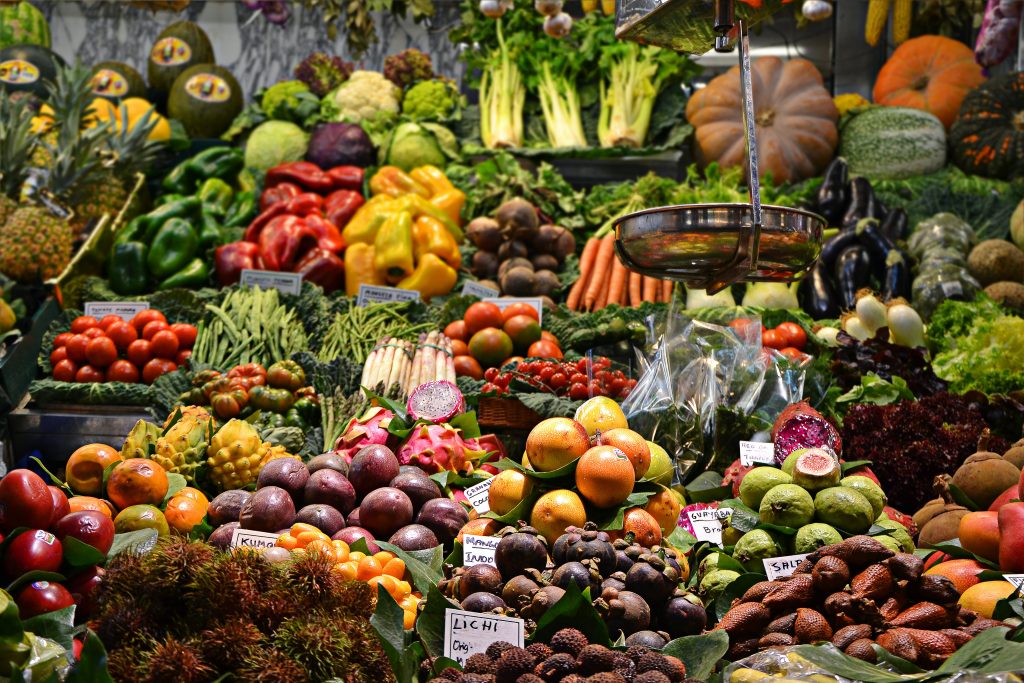What is methane gas and why is it harmful?
Methane is a powerful greenhouse gas emitted by anthropogenic (human-induced) as well as by natural sources. It has a direct influence on climate, but also a number of indirect effects on human health, crop yields, and the quality and productivity of vegetation through its role as an important precursor to the formation of tropospheric ozone (Climate And Clean Air Coalition, 2015).
Methane vs. CO2
Methane is a short-lived climate pollutant with an atmospheric lifetime of around 12 years. While its lifetime in the atmosphere is much shorter than carbon dioxide (CO2), it is much more efficient at trapping radiation. Per unit of mass, the impact of methane on climate change over 20 years is 84 times greater than CO2; over a 100-year period, it is 28 times greater (Climate And Clean Air Coalition, 2015).
Sources of methane
Methane emitted from anthropogenic sources makes up 60% of methane emissions in total. Of that, 60% can be attributed to agriculture, livestock farming, and waste, while the remaining 40% comes from fossil fuel sources, including coal, oil, biofuel, and gas (IEA, 2021).

Methane production in agriculture
The largest source of anthropogenic methane production is from agriculture. Enteric fermentation (a normal digestive process) in ruminant animals creates large amounts of methane that is released via belching or flatus. Livestock production has increased significantly since 1960 with beef production, in particular, which is more than doubling during this time (What’s Your Impact, 2020). As a result, the meat that we eat has a forcible impact on the environment.
Livestock farmers also have to manage large amounts of manure. This waste is kept in large piles or holding tanks that produce significant amounts of methane when broken down under anaerobic conditions.
Food waste
Food waste is another factor affecting the climate. A third of the food produced does not make it to our plates. In low-income countries, food waste is unintentional and occurs early on in the food supply chain. However, in high-income economies waste occurs further along the supply chain. Retailers reject produce based on blemishes, and at the household level, consumers are throwing away up to 35% of their food. This lays waste to a host of resources and contributes to 8% of global emissions (Project Drawdown, 2021).
This food waste ends up in our landfills along with other organic matter, such as garden and lawn clippings as well as degradable carbon, such as newspapers, paper, and cardboard. This organic matter is trapped with no oxygen (anaerobic conditions) when the new garbage covers the existing garbage. These conditions allow microbes to break down the waste, producing large amounts of methane emissions.
Anaerobic conditions in landfills and the decomposition of animal and human waste streams produce 55 million tonnes of methane per year (Bousquet, 2006).
What can we do about methane?
Improve feed quality
Feed additives work to inhibit methanogens in the rumen and subsequently reduce methane emissions. By changing their diet or improving the feed quality of farmed animals using additives or supplements, we can reduce the methane emissions of animal agriculture by up to 18% (Curnow, 2020).
Eat more plants

Livestock isn’t the only one that needs to change their diet. Dietary change can deliver environmental benefits on a scale that few other changes can. A vegan diet can reduce your carbon footprint by up to 73%. This includes a reduction in methane emissions as well as your impact on acidification, eutrophication, and water use. If everyone became vegan, food land use could be reduced by 75%, according to researchers at Oxford University.
Manage waste
One solution to managing emissions from animal manure is to capture methane and then use it on farms. These Biogas systems cover the ponds, and then use the trapped gas to provide heat or power. Livestock industries have shown an increased interest in these systems. They may even be profitable because of the energy production and the trading of renewable energy certificates (Curnow, 2020).
To better manage our food waste, we need an integrated approach between governments, private and not-for-profit sectors, and the community. At the household level, we can reduce the amount of food we send to landfills by being more mindful of what we buy. Trying to use up all our food and composting any scraps will help further mitigate waste.
Support sustainable business
Sustainability has increasingly become a business imperative for companies. Some companies are turning waste into products and by supporting these companies we can use our power as consumers to help reduce methane emissions.
A more sustainable future starts now! Visit THRIVE to find out more about how we can mitigate climate change strive to THRIVE.
References
Bousquet, P., S. C. Tyler, P. Peylin, G. R. Van Der Werf, C. Prigent, D. A. Hauglustaine, E. J. Dlugokencky, J. B. Miller, P. Ciais, J. White, L. P. Steele, M. Schmidt, M. Ramonet, F. Papa, J. Lathière, R. L. Langenfelds, C. Carouge, and E.-G. Brunke. Contribution of anthropogenic and natural sources to atmospheric methane variability. Nature 443, no. 7110 (2006): 439-443.
IEA (2021), Methane And Climate Change. Available at: <https://www.iea.org/reports/methane-tracker-2021/methane-and-climate-change#abstract>
Curnow, M. 2020. Carbon farming: reducing methane emissions from cattle using feed additives. Available at: <https://www.agric.wa.gov.au/climate-change/carbon-farming-reducing-methane-emissions-cattle-using-feed-additives>
Curnow, M. 2020. Managing manure to reduce greenhouse gas emissions. Available at: <https://www.agric.wa.gov.au/climate-change/managing-manure-reduce-greenhouse-gas-emissions>
Urevig, A. Three workable strategies for putting a big dent in methane, the “other” greenhouse gas. Available at: <https://ensia.com/notable/methane-greenhouse-gas-climate-change/>
Project Drawdown. 2021. Reduced Food Waste. Available at: <https://drawdown.org/solutions/reduced-food-waste>
Oakes K. 2020. How cutting your food waste can help the climate. Available at: <https://www.bbc.com/future/article/20200224-how-cutting-your-food-waste-can-help-the-climate>
Climate and Clean Air Coalition. 2015. Methane. Available at: <https://ccacoalition.org/en/slcps/methane>
What’s Your Impact, 2020. Main Sources Of Methane Emissions. Available at: <https://whatsyourimpact.org/greenhouse-gases/methane-emissions>
Petter, O. 2020. Veganism is ‘single biggest way’ to reduce our environmental impact, study finds. Available at: <https://www.independent.co.uk/life-style/health-and-families/veganism-environmental-impact-planet-reduced-plant-based-diet-humans-study-a8378631.html>